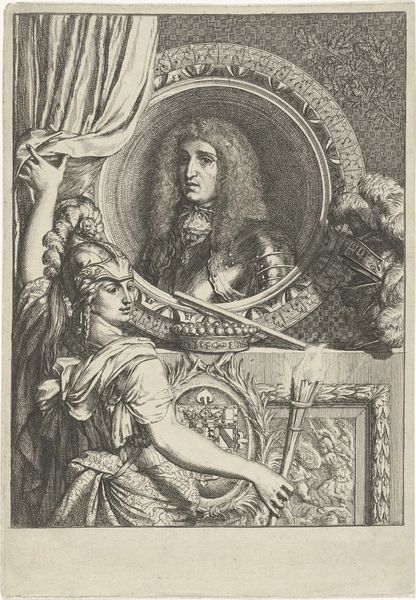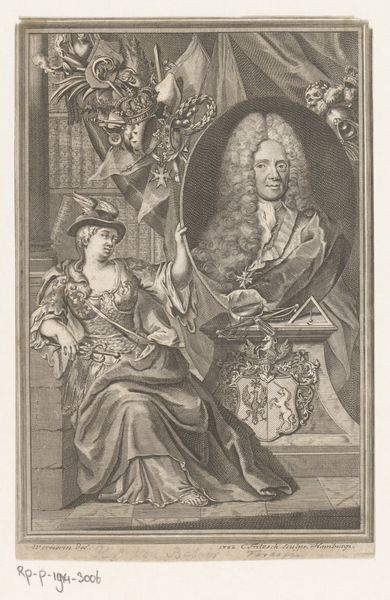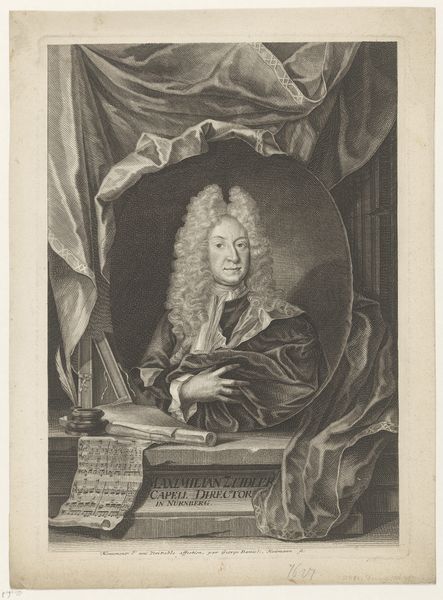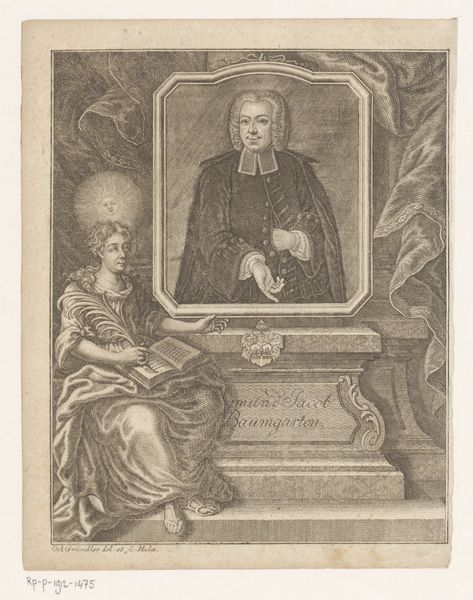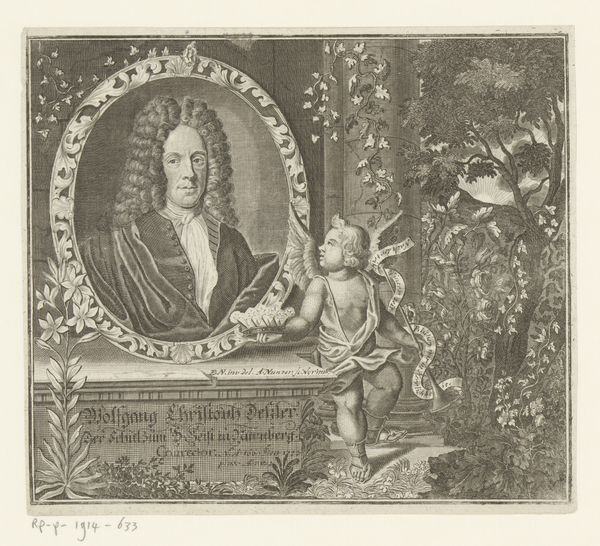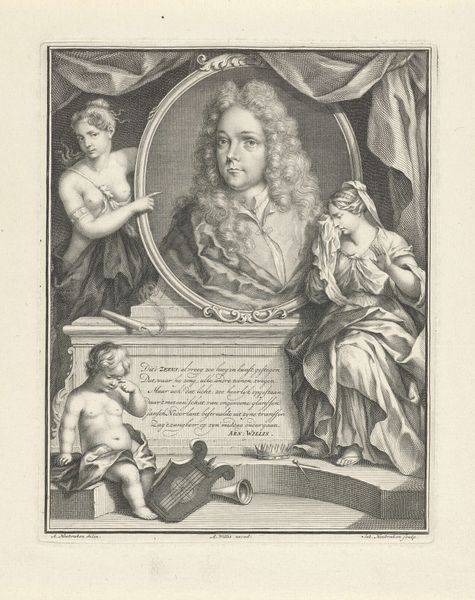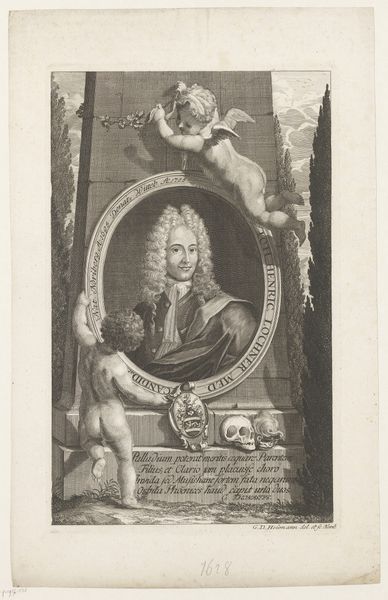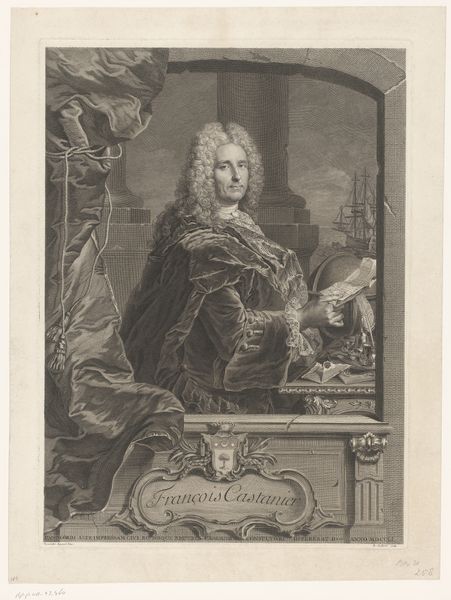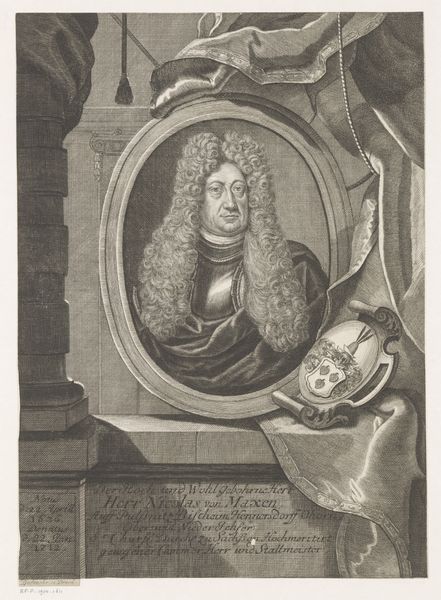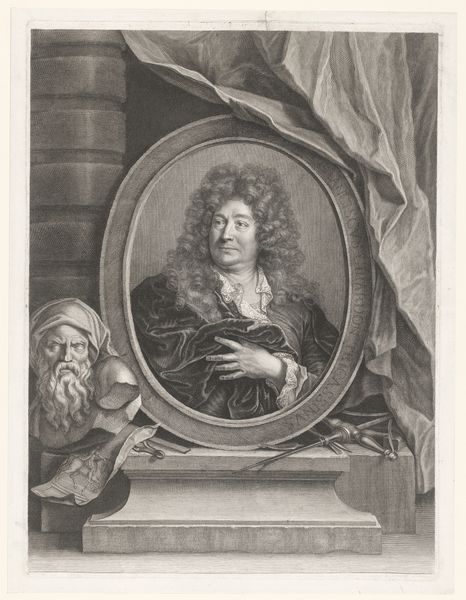
engraving
#
portrait
#
baroque
#
figuration
#
line
#
history-painting
#
engraving
Dimensions: height 310 mm, width 200 mm
Copyright: Rijks Museum: Open Domain
Editor: Here we have "Portret van Daniel Richshoffer," made sometime between 1695 and 1717 by Johann Adam Seupel. It’s an engraving, and the first thing that strikes me is its theatrical feel. There's a curtain, an angel with a trumpet – it all seems staged. What’s your take on this work? Curator: Oh, I agree entirely! The Baroque loved a bit of drama, didn't it? The composition is clever; Richshoffer is presented almost as if revealed, don’t you think? The angel isn’t just ornamental; she's announcing him, quite literally! And notice the line work? Every detail, from his elaborate wig to the folds in the curtain, meticulously etched, wouldn't you say? Editor: Absolutely, it's so detailed. I wonder, does the presence of the angel give any clue as to the symbolism behind this portrait? Is it pure flattery, or something deeper? Curator: Ah, that's the beauty of it, isn’t it? It could be read as a touch of divine approval, maybe a nod to his accomplishments and character. Consider this: it was quite common to attribute earthly success to heavenly favor during that period. He wasn’t just anyone. Also note the oval frame - baroque style. What do you suppose the frame material might be alluding to, conceptually? Editor: Perhaps the oval frame conveys legacy? He will be remembered. So, maybe more than just flattery, a declaration of importance? Curator: Precisely. It is more than a man and a scene in that single view. Editor: It makes you think differently about how portraits can be constructed, as narrative devices as well as likenesses. Curator: Absolutely! Now, who’s feeling inspired to write their own dramatic unveiling? Perhaps that should be the new class assignment.
Comments
No comments
Be the first to comment and join the conversation on the ultimate creative platform.
